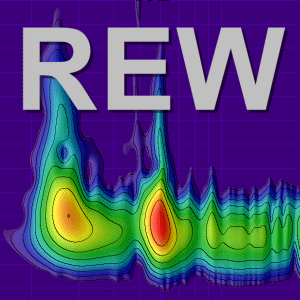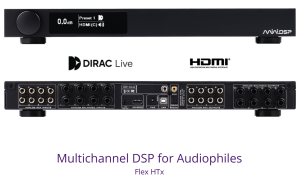JoachimStrobel
New Member
Thread Starter
- Joined
- Jun 20, 2019
- Posts
- 49
More
- Preamp, Processor or Receiver
- Parasound PSP 1500, NanoAvr HDA
- Main Amp
- Parasound HCA 1200
- Additional Amp
- 2x Parasound HCA 1000
- Universal / Blu-ray / CD Player
- Oppo 103D, Parasound CDP1000 & DAC2000
- Front Speakers
- Canton RCL
- Center Channel Speaker
- 2x Canton RCL
- Surround Speakers
- Canton RCL
- Video Display Device
- BenQ Beamer
I recorded responses that I have trouble understanding:
These are two large speakers in a 20 sqm room, placed near corners – there is no other options. And I prepare myself for a DRC measurements with REW.
Now, the first display shows a 20 sec 10-20 Khz sweep with time alignment and default windows with a 1/24 smoothing. I checked the imulse and both speakers are "plus". It is as it is, awaiting DRC work…

And then, I use a FDW of 1/11 octaves and see a severe dip at 9 kHz. Of course, there are other dips, but these are not my concern as they are nudges and could be seen before and relate to the room (?mostly). But the one at 9 kHz is suspect. Why does the FDW filter see it, and the raw data or smoothed data das not see it? And is does not matter if I use 1/11 or 1/40, it is still there.

Meanwhile I changed the amp and play via recorded wave through the whole system, but it is the same. So, this must be the loudspeaker? But why does it only show in an FDW processed sweep? Is FDW processing then a must? Or does FDW emphasize things that are not important.
These are two large speakers in a 20 sqm room, placed near corners – there is no other options. And I prepare myself for a DRC measurements with REW.
Now, the first display shows a 20 sec 10-20 Khz sweep with time alignment and default windows with a 1/24 smoothing. I checked the imulse and both speakers are "plus". It is as it is, awaiting DRC work…
And then, I use a FDW of 1/11 octaves and see a severe dip at 9 kHz. Of course, there are other dips, but these are not my concern as they are nudges and could be seen before and relate to the room (?mostly). But the one at 9 kHz is suspect. Why does the FDW filter see it, and the raw data or smoothed data das not see it? And is does not matter if I use 1/11 or 1/40, it is still there.
Meanwhile I changed the amp and play via recorded wave through the whole system, but it is the same. So, this must be the loudspeaker? But why does it only show in an FDW processed sweep? Is FDW processing then a must? Or does FDW emphasize things that are not important.















